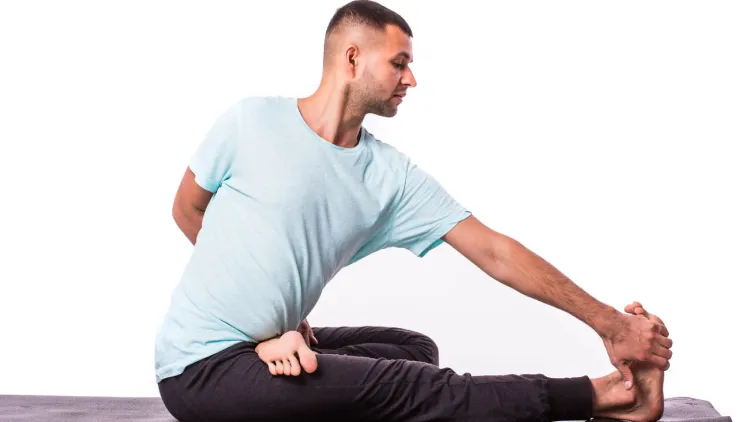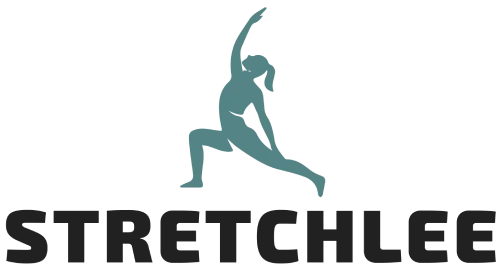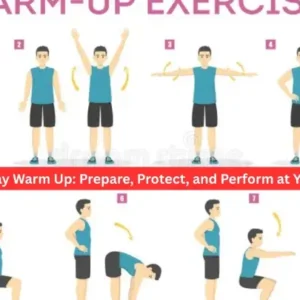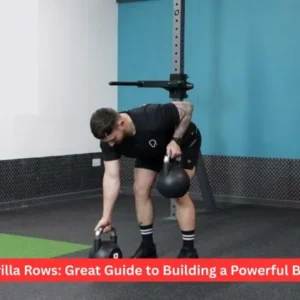The problem of back pain has become one of the most prevalent in the world, and it is not a secret that all the people who are at the desk all day long, as well as those who like to challenge themselves on the weekend, can be the ones who suffer. Although its cause may be ill posture, muscular imbalance, injury, or changes in the spine that can occur over the course of time, stretching for back pain is a rather easy solution that can be performed wherever you are. In this article, you will know how specific stretches relieve tight muscles, enhance blood circulation to the areas that have suffered injuries and strengthen the core posterior of your spine.
We are going to follow through five of the best moves, namely Cat-Cow and Child’s Pose, Piriformis and Spinal Twists, tell you what you should obey and what you really should avoid to get the best out of it, and when it is time you seek professional care. Whether you are struggling with persistent tightness or with a new strain, taking the time to stretch each day could be the quickest way to improve your condition, your posture and even your long-term back health.
You can also view our previous article if you’re concerned about hip pain.
Why Back Pain Happens
There are many causes of back pain. In others, it is due to an extended period at a desk or standing incorrectly. Another person can develop back pain because of strained muscles, overstraining or an instant injury. More chronic cases can be due to degenerative diseases such as herniated discs, spinal stenosis or even arthritis.
Tight muscles are one of the causes of back pain. When your muscles, especially the lower back, hips or hamstrings, pull on the spine and limit mobility in this area, it is tight. This makes the body get imbalanced, contributing to pain in turn. And this is where stretching comes into play with back pain. By stretching for back pain, you soften the stress on the back and allow the misalignment and the healing process.
Other causes of back pain are:
- Lack of physical activity: The muscles will become loose and stiff.
- Poor ergonomics: sitting or lifting posture stresses the spine.
- Weak core strength: The core helps to support your back. Pain also comes about when the back compensates due to being weak.
- Stress and tension: Muscle tensions, especially in the neck and back, are normally caused by stress and tension.

How Stretching Helps Relieve Back Pain
Stretching for back pain is among the initial forms of defence when it comes to the relief of mild to moderate back pain. In many ways, stretching can relieve back pain as follows:
1. Improves Flexibility
The hamstrings, hips and lower back have tight muscles, thus restricted movement. Flexibility can be improved by stretching, and this reduces the strain on your spine, thus enabling body movements.
2. Reduces Muscle Tension
Muscle tension is an important addition to pain. These tight muscles are loosened with regular stretching, and this gives immediate relief as well as long-term relief.
3. Enhances Blood Flow
Stretching increases the blood flow in the muscles and joints, thus inducing tissue nourishment, decreasing inflammation, and accelerating recovery.
4. Improves Posture
A lot of individuals are experiencing bad posture, especially while sitting in front of a desk or peering at phones all day. At the same time, stretching ensures straightening of the spine and symmetry of muscle groups, which lessens the load on the back.
5. Strengthens Support Muscles
When you incorporate moderate but controlled stretching into your routine, you awaken the muscles which support the spine. This may avert the recurrence of pain and the risk of injury as time goes by.
All these advantages indicate that stretching for back pain is a selective, less invasive and cheap approach to pain management.

Best Types of Stretches for Back Pain
When you are willing to take charge of your back health, you should consider adding these excellent stretches to your day-to-day regimen. Although each of the stretches described below can be used to mitigate the pain, it would be best to take pointers and not apply those that hurt more.
1. Cat-Cow Stretch
Cat-Cow stretch is a volatile exercise focusing on the flexibility of the spine and coordination. It heats the spine and gives the posture and eases the tension.
The Way of doing:
- Crawl on hands and knees with your hands placed under the shoulders and knees under the hips.
- Inhale, bend back and lift your head (Cow Pose).
- Breathe out, as you curve the back and tuck in your chin (Cat Pose).
- Do 10 to 8 rounds deliberately and slowly.
Cat-Cow figure is a basic component in most yoga pyramids and the best stretch to apply in a novel stretch when one is facing the back pain issue.
2. Child’s Pose
Child’s Pose is a healing stretch that works on the lower back, hips, and thighs. It lightly lengthens the spine and decreases the stress in the back.
The way to do so:
- Sit down on the ground by getting on your knees and leaning backwards on your heels.
- Bend over and stretch yourself on the ground in front of you.
- Lay your forehead down to the ground and get relaxed.
- Hold between 30seconds and 2minutes.
It is a relaxing pose which relaxes as well as the main component of stretching for back pain.
3. Knee-to-Chest Stretch
The lower back pain is given a proper solution in this stretch, as it directly stretches the lumbar spine and hips.
The question is how to do it:
- Get in a position where you are lying on your back with your knees bent and feet on the floor.
- Put both hands on one knee and bring it to your chest.
- Keep the pose for 20-30 seconds.
- With the other leg, repeat and then attempt to bring both knees towards your chest in order to have a deeper stretch.
This movement can ease the tension on the spine, thus making it an important component in any stretching for back pain exercise.
4. Piriformis Stretch
When the tight piriformis muscle, which is deep in the buttock, compresses the sciatic nerve, it causes symptoms that are similar to those of sciatica.
How to do:
- Sit on the field with your back on the ground and cross the right ankle over your left knee.
- Use your left hand to grab around your left thigh and, with a slow movement, pull your thigh closer to your chest.
- Stop at 30 seconds and feel the stretch in the right buttock.
- Cross over and switch up.
This is especially good when one experiences lower back pain that radiates to the leg. It is a specific method of stretching for back pain due to tight glutes and hip muscles.
5. Seated Spinal Twist
Because of its stimulation of the back and working on the spinal mobility, the Seated Spinal Twist is an excellent way to ease back tension.
Execution strategy:
- Sit on the floor and leave both legs out.
- Crouch on the right leg, but cross it with the left one.
- Put your left elbow on your right knee and support your right hand behind your back.
- Delicately turn your body to the right.
- Repeat on the opposite side 20-30 sec.
When stretching back pain, twisting moves should be achieved slowly and gradually, so as not to worsen any conditions.
Stretching Tips for Back Pain Relief
There are some fundamental rules which should be adhered to to maximise positive outcomes and the effectiveness of stretching to relieve back pain. These guarantee safety, performance and sustainable outcomes.
- Stretch the muscles: Move lightly and cautiously by walking or doing circles with your arms as a warm-up.
- Bouncing never: Bouncing makes the stretch less effective and exacerbates the danger of being injured.
- Take a long breath: Tension causes a tightening of muscles, especially when you are not breathing. Slow breathing to relax.
- Be regular: You can stretch for 10 minutes every morning/day, and this difference will be significant after a long period.
- Awake to pain: Pain is fine, and discomfort is fine also, but sharp pain should raise a red flag. Shorten or omit any painful stretch.
You have to remember the aim of the stretching for back pain is to make you feel better, rather than to go beyond your boundaries.

When to See a Doctor
Though most individuals can benefit and stretch without causing any form of back pain, not everyone can use this method. Consult a doctor in case of a severe, chronic, painful condition accompanied by such symptoms as numbness, weakness, or tingling in the legs. You may require diagnostic imaging or therapy for a condition.
Other red signs are:
- Incontinence of urine or faeces
- Sudden, sharp pain after an accident or fall
- Rest aggravated pain
- Fever, chills, or weight loss of no apparent reason to the eye
Doctors or physical therapists should always be consulted when lifting a new set of exercises, to case whether stretching for back pain is suitable for an individual.
Final Thoughts
One method that is most efficient and natural when it comes to solving back pain issues is stretching for back pain in order to relieve pain, recover flexibility, and prevent the possibility of other future complications. By spending a mere several minutes a day, you can undergo significant changes in your back health and general condition. The above-mentioned stretches are not difficult and do not involve any special equipment, so they can be easily done at home.
No matter whether it is lower back stiffness, tight hips, or upper back strain, regular stretching can make you feel more comfortable, move more freely, and live a better life. Put it into your daily routine and in some time you will feel the tangible improvement of your back condition and behaviour.
Frequently Asked Questions
1. Does stretching for back pain help?
Yes, back pain stretching is one of the most non-invasive approaches to help one get relief from the pain. It relaxes constricted muscles, pumps up blood, de-stiffens you and gets your spine straightened. Stretching, when practised regularly, may not only eliminate the present pain but also prevent its occurrence in the future.
2. What is the frequency with which one should stretch to lessen back pain?
To maximise efficiency, it is advisable that one stretches to relieve back pain every day or at least 4-5 times a week. Ten to fifteen minutes of quality relief is noticeable. Flexibility can be maintained by having consistency to minimise tension and to avoid stiffness recurrence.
3. Is it possible that stretching can increase back pain?
Although stretching the back usually does not cause any harm, it may become inefficient when performed incorrectly or stretched too much. Avoid movements that result in sharp/shooting pain, and during the stretch, do not bounce. In case you are not sure what stretches are safe with your condition, see a healthcare provider or physical therapist.
4. Which are the best stretches for lower back pain?
The most useful exercises that help treat lower back pain are the Knee-to-Chest stretch, Child Pose and Cat-Cow. These are aimed at the lumbar area of the spine, hips and the hamstrings, which are usually causing tightness and pain. These have the capacity of enhancing your day-to-day activities by boosting flexibility and comfort.







